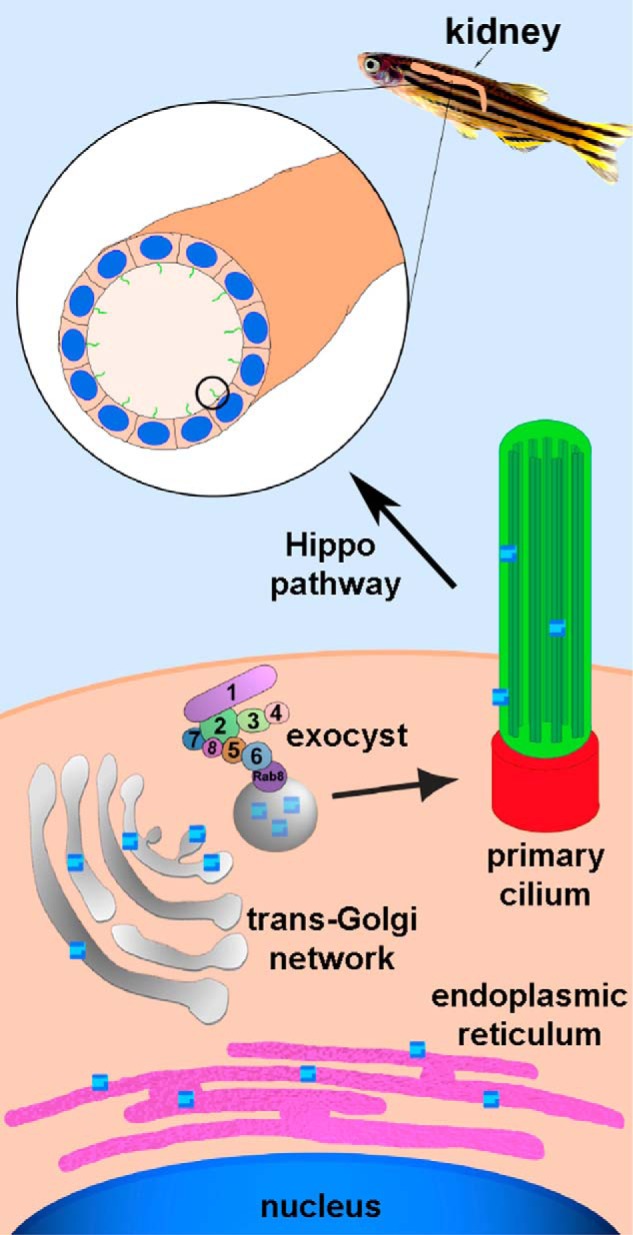Figure 5.

Model for how the exocyst is involved in ciliogenesis and subsequently cystogenesis, tubulogenesis, and organogenesis. Genes are transcribed into mRNA in the nucleus, and mRNA is translated into proteins in the endoplasmic reticulum. Proteins destined for the primary cilium are packaged in vesicles in the trans-Golgi network and trafficked to the primary cilium by the exocyst complex. Exoc5 is a central exocyst member because it links Exoc6 (bound to the vesicle via Rab8) and the rest of the exocyst complex. Primary cilia are necessary for generating cysts and tubules, which in turn are necessary for generating the kidney, and involve the Hippo pathway.
